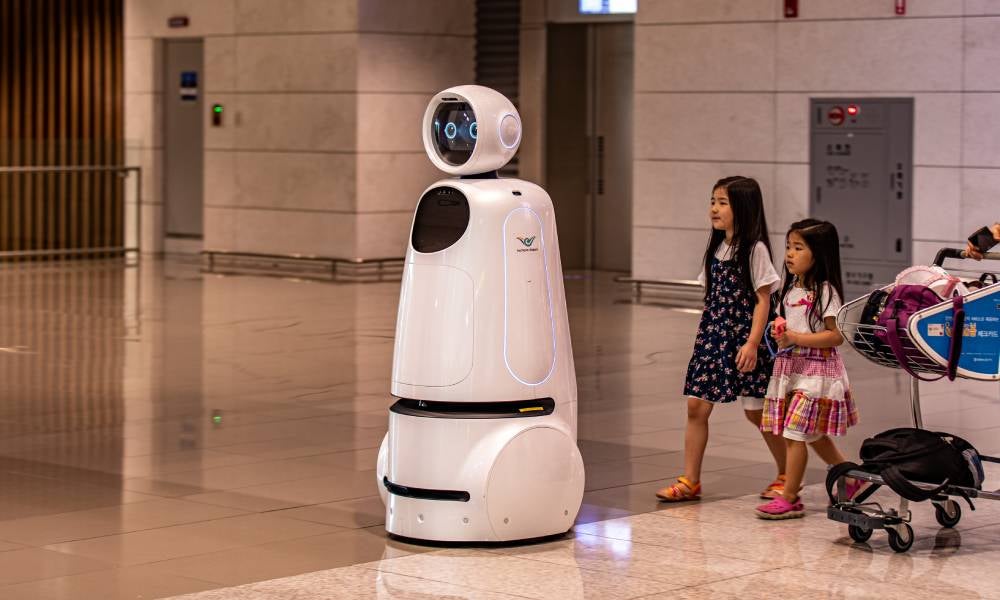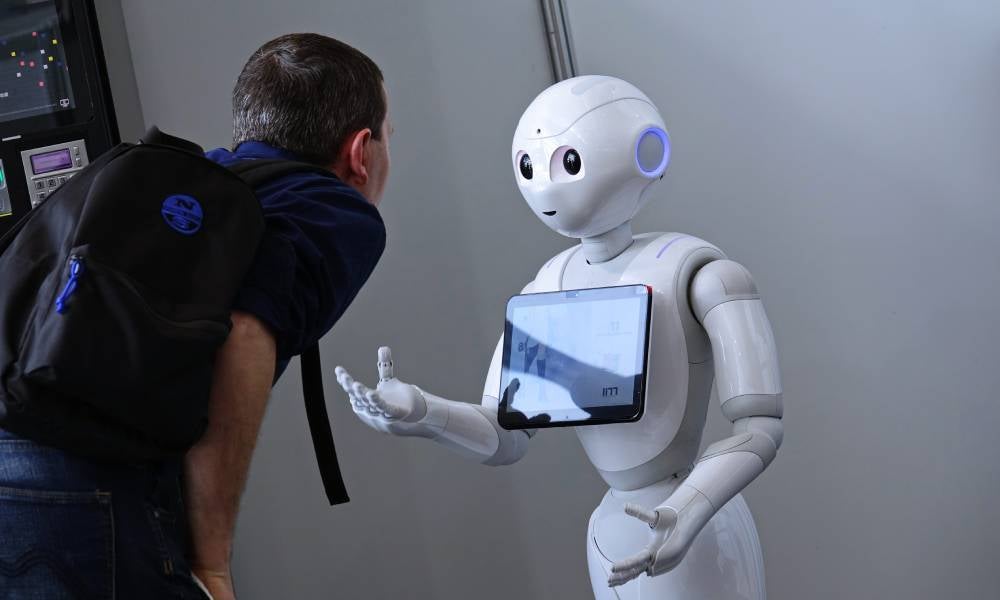Are service robots suitable for all brands?
Research reveals why some brands may not always benefit from using frontline service robots
This article is republished with permission from China Business Knowledge, the knowledge platform of Chinese University of Hong Kong (CUHK) Business School. You may access the original article here.
Whether it’s due to a manpower shortage or a customer preference for avoid face-to-face contact as a result of the pandemic, there is no mistaking that hospitality providers around the world are becoming increasingly willing to experiment with the use of robots to provide services to customers. More and more, robots are supplementing or sometimes even outright replacing their human counterparts in roles ranging from the front desk and concierge, all the way to robotic waiters serving food to diners. However, does the implementation of service robots really help companies to provide a positive experience to customers? A recent research study has found service robots might not be the best solution for every brand.
The research study titled Robot-Brand Fit The Influence of Brand Personality on Consumer Reactions to Service Robot Adoption was co-written by Choi Sungwoo, Research Assistant Professor, and PhD student Stella Liu, both at the School of Hotel and Tourism Management at the Chinese University of Hong Kong (CUHK) Business School, as well as Prof. Choi Choongbeom at Sejong University. The researchers found that customers’ perception of a brand’s personality may affect whether they feel that using service robots in different contexts would be appropriate.
“Robots have been a great help to the service industry, especially during the pandemic, helping businesses deal with manpower shortages as well as reducing interpersonal contact to lower virus transmission risk. The industry has long been celebrating the use of robots and we are constantly improving the functions of robots in the quest for improved customer satisfaction. However, what if I tell you that robots are not for all? Some brands might be worse-off if they choose to integrate robots into their operations,” said Prof. Choi. “Using service robots can only make customers happy when they think that the use of robotics is suitable for the brand.”

Brand personality and robots
Robots have been used in many aspects in the service industry. For example, different hotels have been experimenting with their use in concierge, front desk, as well as room delivery roles. Robots are also increasingly being deployed in shopping malls in sanitation roles in light of the pandemic.
Given the different functions of service robots, prior studies classified them into high-contact and low-contact according to their assigned job tasks. High-contact service robots are those that take care of more direct contact and interaction with customers, such as concierge robots. Low-contact service robots refer to those with less direct interactions with customers, such as those specialising in cleaning and disinfection roles.
Prof. Choi and his co-authors theorised that customers would react differently to high and low contact service robots when used by brands with different personalities. Brand personality, as defined by prior studies, is a set of human-like qualities that customers attach to a brand. How customers react would depend on whether they think the usage of the robots is a good fit with the brand personality.
The researchers confirmed their theory after conducting three experiments involving hundreds of online participants from the US. Participants were asked to imagine they had found a deal at either two hotel brands – the upscale mainstream luxury chain Marriott or its boutique offshoot brand Aloft. After examining basic information about the two brands, the participants were asked to evaluate them. The result was that participants considered Marriot exuded a sincere and traditional personality while that of Aloft gave off a personality that was more exciting and futuristic. They were then told to imagine that the hotel chain had implemented new robotic technologies to handle services such as check-in and restaurant dine-in (in the high-contact case) or tasks that did not necessitate direct customer interaction, such as sanitation or housekeeping (in the low-contact case), and asked on a scale of seven how likely they were to make a booking at this hotel.
Read more: Steer it – don’t fear it: navigating AI with confidence
According to the results, participants were less willing to book a hotel brand they consider had a more sincere personality if it implemented high-contact service robots, with the combination scoring an average of 5.11. This compared to an average score of 5.61 when asked whether they would make a booking at a hotel with a more futuristic brand that was seeking to implement high-contact customer service using robots. On the other hand, there was no statistically significant difference in participants indicating whether they would prefer to make a booking at either the hotel with the warm and sincere personality or the more exciting and futuristic brand when they were told that low-contact robots would be in use.
Furthermore, the study results showed participants saw a poor fit between the adoption of high-contact service robots and hotels with a sincere brand personality, rating this combination at 5.33. In contrast, the use of high-contact service robots by a hotel with a futuristic personality received a higher fit score of 6.01. Low-contact services robots, again, did not arouse any strong feelings among participants, regardless of whether it was used by either type of hotel.
“When a sincere brand replaces their human servers with robots and uses this in a high-contact context, it somewhat defeats the brand’s personality and main goal, which is based on providing services that come from the heart. For brands with modern and futuristic personalities, this is a different story,” Prof. Choi said. “It doesn’t mean that sincere brands absolutely cannot use robots in high-contact roles, but it is essential for them to try to make up the loss of the human touch.”

How to mitigate negative customer reactions
It all goes back to customer expectations. According to the study, since the use of high-contact service robots by sincere brands may be viewed in a negative light as a substitute for human interaction with guests, sincere brands may consider using other means to make up for the reduced human touch.
In one of the experiments, the researchers tested whether using a friendly message to explain the deployment of high-contact service robots would weaken the negative customer reaction. The results show that participants indicated a stronger willingness to be served by concierge robots provided by a sincere brand when the warm message was given compared to when the message was absent. In terms of numbers, participants indicated their willingness to use concierge robots came in at an average score of 4.73, again on a scale of seven, if it was accompanied by a warm explanatory message, and 3.76 when this message was absent.
“Operators of established brands must be aware how their target customers perceive their brand personality. A sincere brand should do everything they can to ensure that they will continue to provide a personal touch when exploring the use of robots in high-contact customer-facing roles. On the other hand, brands with a modern and playful personality may have greater freedom to experiment,” Prof. Choi said.
Subscribe to BusinessThink for the latest research, analysis and insights from UNSW Business School
Finally, in two of the three experiments, the researchers were also able to successfully manipulate the social media page of a fictitious hotel brand to project an image of either sincerity or excitement. This suggests that using different content and colour schemes on social media can make potential customers perceive the same brand differently. Prof. Choi noted online content could serve as a powerful tool not only for well-known brands but also for new brands seeking to predict how customers will view their brand personality and, consequently, how they will react to the use of service robots in either high-contact or low-contact scenarios.
“For new brands focusing on projecting a feeling of warmth and a focus on the human touch, the adoption of high-contact service robots should be approached with caution. At the end of the day, customers may not regard this to be a good match with their brand personality. In contrast, if a new brand is seeking to project a personality that is youthful, unique and trendy, then they may very well be able to benefit if they choose to use service robots in either high- or low-contact settings.”
